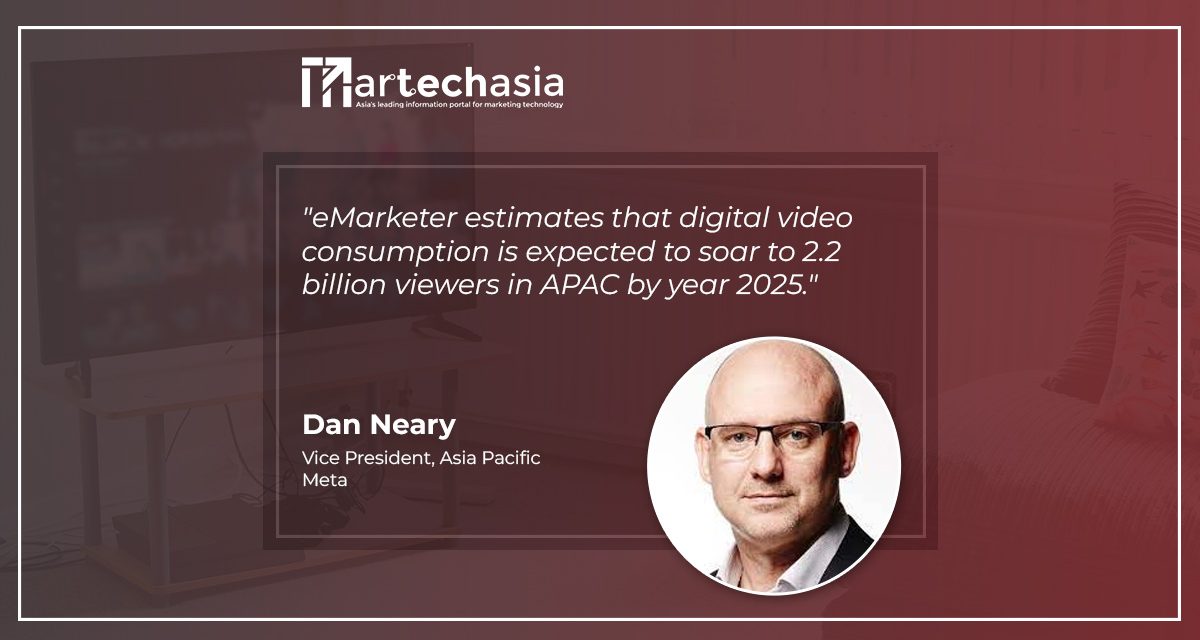With the pandemic fueling the rise of all forms of mobile video – particularly short-form video, this trend is only set to accelerate.
For the last few years, we have been banging the drum about the evolution of video as a brand building tool. With the pandemic fueling the rise of all forms of mobile video – particularly short-form video, this trend is only set to accelerate. eMarketer estimates that digital video consumption is expected to soar to 2.2 billion viewers in APAC by year 2025.
So we chose to look at the evolution of video as part of Ideas That Matter, a content series brought to you by Meta where we discuss how social trends are intersecting with business to create new opportunities.
Through our research and experience over the last few years, we’ve seen two distinct categories of video experiences that have accelerated largely due to mobile: “on-the-go” and “captivated viewing.” As a result of these changing viewing habits, people are most drawn to brands that are easy to discover and use, whether it’s through their strong presence in online communities or their high-quality mobile content across platforms. This is evident especially among younger audiences who are increasingly influenced by video content when discovering new brands or when it comes to brand selection. A McKinsey study of Gen Z across six countries in APAC revealed that 70% of Gen Z respondents surveyed discover new brands via video-based social media at least once a month.
To uncover how brands, creators and agencies use video for growth and success, I had a discussion with Joanne de Rozario, Managing Director, Prodigious Singapore, MC/creator Khánh Vy, who has over 6 million followers and Viksita Singh Menon, General Manager, South East Asia, Paula’s Choice Skincare. We explored why it is important for businesses to tell a connected story about their brand and all of the different ways they can do it today with video.
The power of learning
Viksita Singh Menon, a self-confessed beauty enthusiast, has seen how videos drive awareness, interest, engagement and consideration for beauty brands. She said that with the pandemic, people could not visit stores to try products or ask beauty advisors about what made the product unique. They turned to tutorial videos which served the dual function of educating and entertaining them. “Once the consumer is interested in the product, they want to know – How do I use the product? What’s the before and after going to look like? This is where videos play an extremely important role,” she said. This has also fueled the rise of beauty influencers who teach how to get a desired look, share product intelligence as well as tools and techniques that engage their followers.
Storytelling versus story-yelling
While beauty is an obvious category, video’s power goes far beyond any one category or vertical. Joanne de Rosario, who has worked in creative production for half her life said she is a true believer in the power of a good story. “The combination of moving visuals, voices, a powerful script, music, all provide the perfect way to tell a story to move someone,” she said. Moreover, as a result of the pandemic, people are even more likely to respond to purpose and connection. People are much more concerned about how brands make them feel. They want to know what the brand stands for, and will make considered choices to support brands that stand for a purpose they personally identify with that reflects their values and beliefs. Therefore, as Joanne put it, “Brands need to work into what I personally call storytelling, not story-yelling.”
Build unique experiences with video
From big brands to individual businesses, video’s role in branding is universal. Just ask Vy Khanh, who went from being an unknown high school student to a language influencer with over 6 million followers across her social platforms in just six years. “I was just a high schooler, an ordinary girl in a small city in Vietnam. One day, my friend uploaded a video of me mimicking seven languages just for fun. And after one night, that video just went viral all over the internet, and my Facebook Page went from 300 friends to 50,000 followers,” she said.
Vy received invitations to attend several shows and discovered that people were hungry for language education and personal development skills. In 2017, she started a Facebook Page but wasn’t quite sure about what kind of content she should create. In 2019, a mentor advised her to create more video content. Vy struggled at first. She made some random videos for fun and not a lot of it worked well. She then figured it was important to offer a unique experience for which the audience would want to return. She began consistently posting videos about learning languages for free, for people from all walks of life. “In the last three years, my Facebook Page saw massive growth from 50,000 followers to 2.3 million followers,” she said.
Match video formats and lengths
With the plethora of video options out there, brands of all sizes face similar challenges and are looking for ways to create video that achieves good reach, attention and completion rates. Joanne’s advice: “If you want to tell a long story, and sometimes you have to, it’s not wrong. But don’t forget to look at the sections, which you can then lift for different platforms that require a shorter story. More importantly, don’t forget to shoot them so you can use them for both horizontal and vertical formats.”
For Vy, success with video is tied to authenticity and consistency. She balances out paid and organic posts, focuses on her audience’s needs and believes that consistency breeds familiarity.
Curate Community Building and Shared Experiences
Viksita highlighted the skyrocketing popularity of live streaming. “You have influencers explaining about products, taking questions in real time, which then amplifies the relevance of the brand and its relatability,” she said. Viksita also pointed to the power of community building by brands and the opportunity to create a sense of belonging through shared experiences. Her advice to brands is to embrace the rich diversity of the Asia Pacific region and find ways to include all of the different cultures.
Video is indeed here to stay and grow. To watch the full episode, visit the Meta for Business Facebook Page here.


















